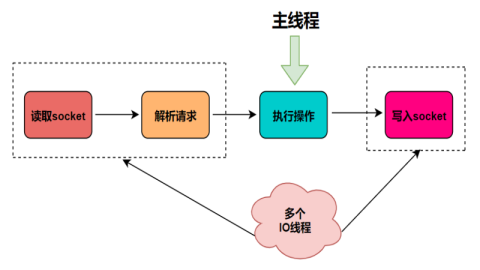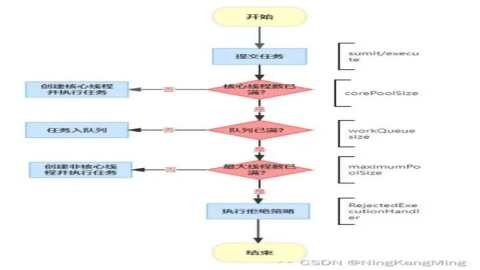转载声明:文章来源:https://blog.csdn.net/m0_37846579/article/details/80278092
原型链
原型链是一种关系,实例对象和原型对象之间的关系,关系是通过原型(__proto__)来联系的
实例对象中有__proto__,是对象,叫原型,不是标准的属性,浏览器使用,并且有的游览器不支持
构造函数中有prototype属性,也是对象,叫原型
注意 原型中的方法是可以互相访问的
实例代码
function Animal(name,age){
this.name=name;
thia.age=age;
}
//在原型中添加方法
Animal.prototype.eat=function(){
console.log("动物吃草")
this.play()
}
Animal.prototype.play=function(){
console.log("玩啥呢")
}原型的简单语法
利用原型共享数据
第一种 写法
function Student(name,age,sex){
this.name=name;
this.age=age;
this.sex=sex;
}
Student.prototype.height="188"
Student.prototype.weight="55kg"
Student.prototype.study=function(){
console.log("好好学习i")
}
var stu=new Student("小红",20,"男")
console.dir(stu)结果
第二种 写法
function Student(name,age,sex){
this.name=name;
this.age=age;
this.sex=sex;
}
Student.prototype={
height:"188",
weight:"55kg",
study:function(){
console.log("好好学习i")
}
}
var stu=new Student("小红",20,"男")
console.dir(stu)结果
我们会发现 两种写法还是有差别的 ,第二种写法会导致constructor构造器属性消失 所以我们得手动修改构造器指向
最终代码
function Student(name,age,sex){
this.name=name;
this.age=age;
this.sex=sex;
}
Student.prototype={
constructor:Student,
height:"188",
weight:"55kg",
study:function(){
console.log("好好学习i")
}
}
var stu=new Student("小红",20,"男")
console.dir(stu)好了,这回有了

实例对象使用属性或方法的规则
实例对象使用的属性或方法,现在实例中查找,如果有则使用自身的属性或方法,
如果没有,则通过__proto__指向的原型对象 查找方法,找到则使用,
如果找不到则继续向__proto__寻找,直到未找到时报错
构造函数和实例对象和原型对象之间的关系
构造函数可以实例化对象
构造函数中有一个属性叫prototype,是构造函数的原型对象
构造函数的原型对象(prototype)中有一个constructor 构造器,这个构造器指向的就是自己所在的原型对象所在的构造函数
实例对象的原型对象(__proto__) 指向的是该构造函数的原型对象(prototype)
构造函数的原型对象(prototype)中的方法是可以被实例对象直接访问
改变原型是否可以改变?
首先我们得知道构造函数和实例对象中的this 指向的是什么
这里我创建了自定义构造函数 Person ,并在内部输出了this
并且在Person 的原型对象上添加了一个eat 方法,也输出了一个this,
接着我实例化了一个对象,并调用eat方法,
我们执行一下,查看结果如何
输出结果
由此得出
原型对象中方法中的this 就是实例对象
构造函数中的this就是实例对象
接下来我们尝试改变一下原型的指向
这段代码中,首先我定义了一个Person自定义构造函数,并且在原型上添加了一个eat方法
定义了一个Student 函数,在原型上定义了一个sayHi方法,
然后我将 Student的原型指向 了一个 Person的实例对象
接着实例化一个Student,接着分别在stu 实例上 尝试着调用 eat方法 和 sayHi 方法,
运行结果
到此我们可以确定,stu实例对象的原型指向被下面这条代码改变了
Student.prototype=new Person(10);总结
原型指向可以被改变的
实例对象的原型__proto__指向的是该对象所在的构造函数的原型对象
构造函数的原型对象(prototype)指向如果改变了,实例对象的原型(__proto__)指向也会发生改变
实例对象和原型对象之间的关系是通过__proto__ 原型来联系起来的,这个关系就是原型链
如果原型指向改变了,那么就应该再原型改变指向之后添加原型方法
那么sayHi方法则会创建在 new Person(10) 这个实例对象上
原型最终指向了哪里
实例对象中的__proto__指向的是构造函数的prototype
以此代码为例
测试一下


所以
per实例对象的__proto__ ---指向---> Person.prototype的__proto__ ---指向---> Object.prototype的__proto__ 是Null
查看了一下html的dom对象,这有很有意思的原型链

这里祭出祖传JPG
实现继承
小知识---->instanceof的判断方法:
从左边操作数的__proto__路线出发,从右边操作数的prototype出发,如果两条路线最终指向一个引用就是true了
1.利用 call 借用构造函数继承
优点:实现了继承属性,但值都不相同
缺点: 无法继承父级类别中原型上的方法
function Person(name,age,sex,weight){
this.name=name;
this.age=age;
this.sex=sex;
this.weight=weight;
}
Person.prototype.sayHi=function(){
console.log("您好")
}
function Student(name,age,sex,weight,score){
//将当前实例对象传入Person 借过来使用一次来达到继承效果
Person.call(this,name,age,sex,weight);
this.score=score;
}
var stu1=new Student("小明",10,"男","10kg","100")2. prototype 实现继承
利用prototype,将Student 的prototype 指向 Person 来达到继承效果,
优点:继承了父级原型上的方法
缺点: 实例化多个Student 都必须共用相同的name 和 age
Student.prototype.constructor=Student注意: 使用原型继承时,需要将构造器的指向更改回正确的指向
function Person(name,age){
this.name=name;
this.age=age;
}
Person.prototype.eat=function(){
console.log("Person 吃饭")
}
function Student(num,score){
this.num=num
this.score=score
}
//继承
Student.prototype=new Person("小红",10)
Student.prototype.constructor=Student
var stu =new Student(2016002288,80)
stu.eat()//Person 吃饭3.组合继承
组合继承其实就是结合了上述的两种方法来实现继承,拥有两种方法的优点
function Person(name,age,sex){
this.name=name;
this.age=age;
this.sex=sex;
}
Person.prototype.sayHi=function(){
console.log("你好")
}
function Student(name,age,sex,score){
//借用构造函数
Person.call(this,name,age,sex)
this.score=score
}
// 改变了原型指向
Student.prototype=new Person();//不传值
Student.prototype.eat=function(){
console.log("吃东西");
}
var stu=new Student("小黑",20,"男","100分")
console.log(stu.name,stu.age,stu.sex,stu.score);
stu.sayHi()//你好
stu.eat()//吃东西4.拷贝继承
类似于复制,把一个对象中的属性和方法直接复制到另一个对象中
function Person(){
}
Person.prototype.name="小红"
Person.prototype.age=18
function Student(){
}
var p=Person.prototype;
var s=Student.prototype;
for(key in p){
s[key]=p[key]
}
console.dir(Student)console

每次都要for in 好累 , 可以进行优化封装一下
function extend(Child,Parent) {
var p = Parent.prototype;
var c = Child.prototype;
for (var i in p) {
c[i] = p[i];
}
//这个属性直接指向父对象的prototype属性,可以直接调用父对象的方法,为了实现继承的完备性,纯属备用性质
c.par = p;
}5. 直接继承prototype
优点 : 效率比较高
缺点 : 因为相当于是个传址过程 所以修改Student的属性 Person 的也会被更改
function Person(){};
Person.prototype.name="小红";
Person.prototype.age=18;
function Student(){};
Student.prototype=Person.prototype;
console.dir(Student);
console.dir(Person);
Student.prototype.age=25;console

6.利用空对象作中介实现继承
用这种方式修改 Student 的prototype 不会影响到 Person的prototype
function Person(){};
Person.prototype.name="小红";
Person.prototype.age=11;
function Student(){};
var F=function(){};
F.prototype=Person.prototype;
Student.prototype=new F();
Student.prototype.constructor=Student;
Student.prototype.age=25;
console.dir(Person)
console.dir(Student)console

封装一下
function extend(Child,Parent) {
var F = function(){};
F.prototype = Parent.prototype;
Child.prototype = new F();
Child.prototype.constructor = Child;
Child.par = Parent.prototype;
}





帖子还没人回复快来抢沙发